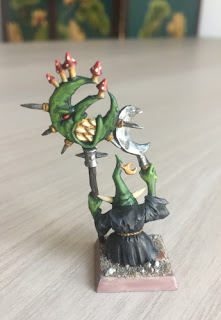While fantasy artists on the western shore of the Atlantic focused on portraying faithfully the bodies of heroes and villains, something different was happening on the other side of the Ocean and namely in England.
This country already had a rich tradition of fantasy illustration dating from the end of the 19th century, with Arthur Rackham and other artists giving form to fairy tales and, somehow, inherited a very different approach to fantasy art, one that was more related to the general feeling and atmosphere offered by an illustration rather than the story it told. Roger Dean was one of the earliest fantasy artists in UK, and he started to become famous more or less at the time of Frazetta in the US.
Dean was born in Ashford, Kent, in 1944 but he spent his childhood travelling with his family (his father was in the Army). Only at 15 did Dean settled down again in England; he studied at the Canterbury College of Art and later at the Royal College of Art where he graduated in 1969 with a thesis on 'The psychology of the built environment'.
Dean was not interested specifically in Fantasy literature, but rather in landscape and designs, and yet his work has had a huge impact on Fantasy Art.
Not only his paintings, on which we will focus on this post, but also his designs, at which it’s worth taking a quick look.
Roger Dean’s first project was finished while he was still in University: in 1968 he presented his Sea Urchin chair.
Later he came out with a new idea, which was seminal for his work in design: the Retreat Pod. This is a piece of furniture that could be presented as a chair or a sofa, but it is much more: essentially, a closed space where a person can “retreat” like inside a womb, a personal space for concentration and imagination. This was groundbreaking at the time, so much that even Stanley Kubrick wanted one of those in his movie Clockwork Orange (1972).
The concept of the Retreat Pod evolved from piece of furniture to living space. With the project Home for Life, Roger Dean and his brother Martin created a concept for a new kind of housing - cheap, sustainable and beautiful. It has evolved ever since and, at the time of posting, Dean is still working on it making it larger and better.
But enough of this - what we want is pictures, illustrations, paintings. Dean worked mostly with watercolour (I know, so British!) with occasional experiments with gouache, ink and crayons. The first famous painting Dean produced was produced again in 1968, the year before he graduated - it was the cover for a Progressive Rock band, Gun.
This was the first of a long list of album covers the artist did. He worked mostly with prog bands, so much that his style became a sort of trademark for the genre, but he occasionally covered other genres, too.
 |
| Ramases - Space Hymns (1970) |
 |
| Earth and Fire - Earth and Fire (1970) |
 |
| Billy Cox - Nitro Function (1971) |
 |
| Osibisa - Osibisa (1971) |
 |
| Midnight Sun - Midnight Sun (1971) |
 |
| Yes - Close to the Edge (1972) |
 |
| Uriah Heep - Demons and Wizards (1972) |
 |
| Uriah Heep - The Magician's Birthday (1972) |
 |
| Yes - Awakenings (1972) |
 |
| Yes - Escape (1973) |
 |
| Yes - Tales from Topographic Oceans (1973) |
 |
| McKendree Spring - Spring Suite (1973) |
In 1972 Dean designed the first Virgin logo, which the company used for it debut until 1977, the period when Progressive Rock was big. When Punk became the next thing and Virgin signed the Sex Pistols, the logo became the one we know today.
In 1985, Dean started his cooperation with a software house, Psygnosis, for which he designed logo and developed concepts. He designed the covers for the boxes of Obliterator (1988), Shadow of the Beast (1989) and Ork (1991).
Chances are you answered "yes".
In 2013 Dean filed a legal case against director James Cameron about
Avatar, claiming - quite reasonably, if you ask me - that most of the
landscape art was a total rip-off of his work in the last 40 years. Less
reasonable was the compensation he asked for - 50 million US$. The
filmmakers admitted being influenced by Roger Dean, but not so much to
owe him money, on which the court agreed, so that in 2014 the case was
dismissed.
One thing Dean never worked on, as far as I know, is Stanislaw Lem’s Solaris. But I remember all the time I was reading it, I had in mind Dean’s landscapes. This is the only way I can imagine the fantastic structures created by the planet. Pity it didn’t happen - if you ever read us, Mr. Dean, please do a watercolour of a Mimoid. Pleaaaase.
 |
| Lighthouse - One Fine Morning (1970) |
 |
| Electric Sheep (2004) |
 |
Yes - Like it is (2014)
|
What do you think of Roger Dean’s art? As usual, to close the post, here are my favourite pieces. They all share the same visionary majesty of an architecture that blends with the surrounding nature, and at the same time dominates it. The light is used to perfection to create depth and perspective, and at the same time evoke a sense of mystery all painting share - don't you feel an urge to go forward, to explore these outworldy and beautiful landscapes? This is what Fantasy is all about to me. Roger Dean simply nails it.
 |
| Jade Sea (1976) |
 |
| Troll Home (?) |
|
|
 |
| Green Towers (1981) |
 |
| Freija's Castle (1987) |
 |
| The Ladder (1999) |



















































